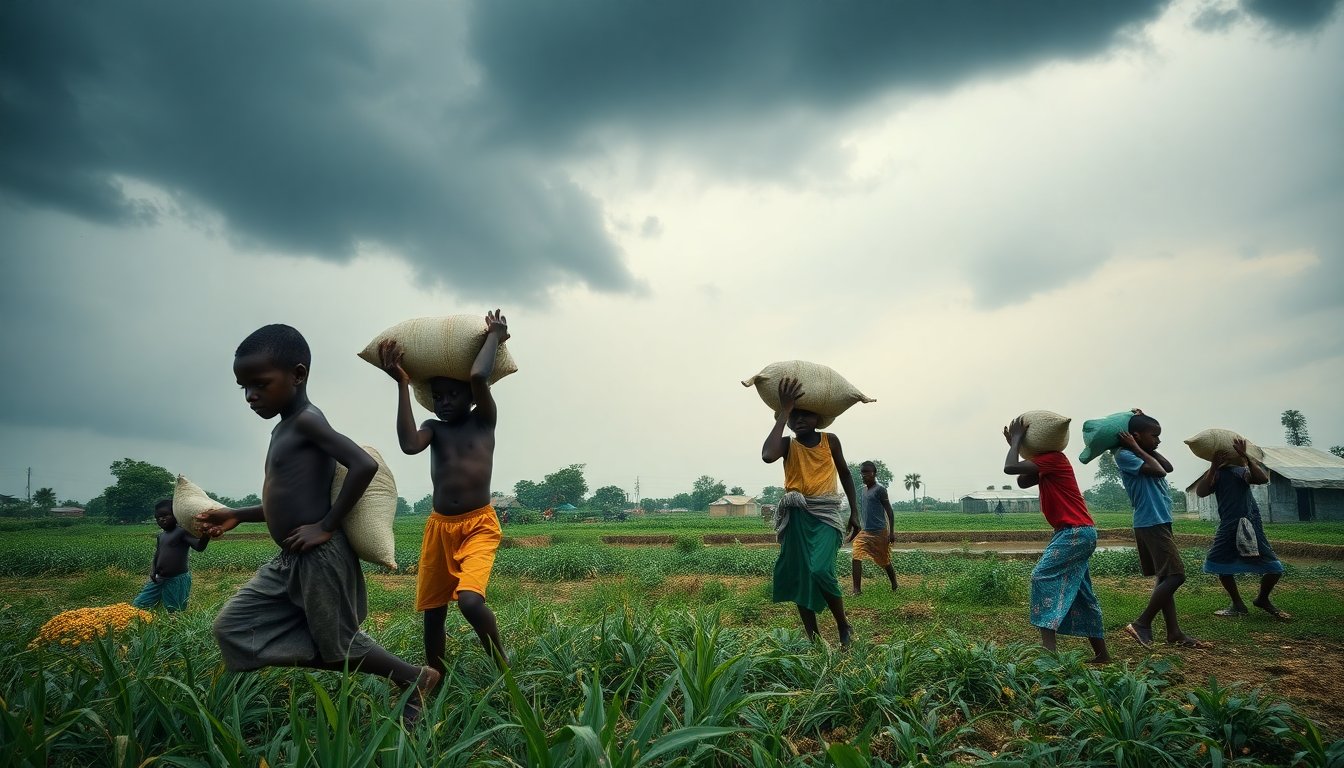Table of Contents
In South Sudan, a recent report highlights a critical issue: a significant number of children are involved in child labor, with nearly two-thirds of the youth population engaged in its worst forms. This extensive study, conducted by the government in collaboration with the charity Save the Children, reveals alarming rates of child labor, with some regions reporting figures as high as 90 percent.
The situation is further aggravated by ongoing humanitarian crises, including widespread flooding, disease outbreaks, and persistent conflicts.
The National Child Labour Study, released on a recent Friday, surveyed over 418 households across seven states in South Sudan. Researchers found that approximately 64 percent of children aged five to seventeen are involved in forced labor, sexual exploitation, theft, and armed conflict.
These statistics indicate a deepening crisis that transcends mere poverty and points to systemic exploitation.
The impact of conflict and environmental disasters
Regions such as Kapoeta South, located near the Ugandan border, report particularly troubling figures, with 90 percent of children engaged in labor-intensive activities like gold mining, farming, and pastoralism instead of pursuing education.
The Yambio region in southwestern South Sudan also faces devastating child labor rates driven by local conflicts and the practice of child marriage.
Gender disparities in child exploitation
Exploitation types vary significantly based on gender. Boys are often drawn into hazardous industries or coerced into armed groups, while girls frequently face forced marriages, domestic servitude, and sexual abuse.
The report reveals a troubling reality: even when families are aware of legal protections, a significant 70 percent of children in hazardous or illegal occupations come from households that understand the existing laws.
Education as a protective factor
“When nearly two-thirds of a country’s children are working – and in some areas, almost every child – it signals a crisis that extends beyond poverty,” states Chris Nyamandi, the South Sudan country director for Save the Children.
The prevalence of child labor in South Sudan is alarmingly higher than in the broader East African region, where the average is around 30 percent. In South Sudan, the rate stands at an astonishing 64 percent, representing a significant humanitarian emergency.
Nyamandi emphasizes that education serves as the most powerful protective measure against exploitation. Children enrolled in school are significantly less likely to become ensnared in labor practices. The government of South Sudan acknowledged the severity of this crisis during the report’s launch in Juba. Deng Tong, the undersecretary at the Ministry of Labour, remarked that these findings will be crucial in shaping future actions.
Broader humanitarian challenges
This concerning report emerges amidst severe flooding impacting nearly one million South Sudanese, leading to the displacement of around 335,000 individuals and damaging over 140 health facilities. The United Nations has warned of a related malaria outbreak, reporting over 104,000 cases in just one week. Additionally, approximately 7.7 million people are currently facing acute hunger.
Amid these challenges, fears of a renewed civil war loom large over South Sudan. The fragile peace agreement established in 2018 between President Salva Kiir and First Vice President Riek Machar appears increasingly tenuous. Armed clashes have escalated to levels not seen since 2017. The recent arrest of Machar on charges of treason and crimes against humanity has further destabilized the country, prompting the displacement of approximately 300,000 individuals this year alone.
The findings of the National Child Labour Study highlight a pressing humanitarian crisis that requires immediate and comprehensive action. The intersection of child labor, conflict, and environmental disasters presents a grim outlook for the future of South Sudan’s children, underscoring the urgent need for national and international interventions to protect vulnerable youth and provide them with opportunities for a better life.





